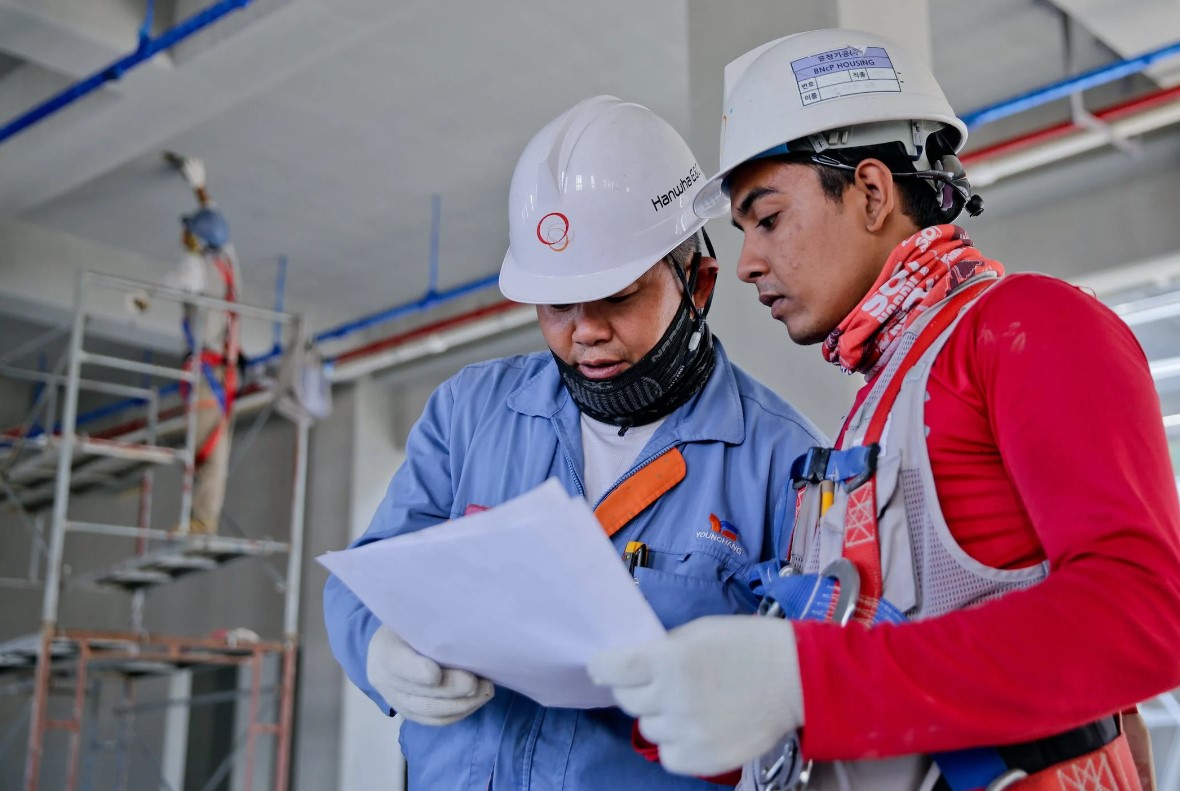Creating an environment where employees feel secure and protected is the foundation of a thriving workplace. Safety at work goes beyond the mere avoidance of accidents; it’s about fostering a deep-rooted culture that values the well-being of every individual. This is a multifaceted mission, one that calls for commitment, diligence, and an unwavering dedication to the collective health of the workforce. When employees step into their workplace, the certainty that they are cared for and protected is as crucial to their performance as their professional skills.
At the heart of this lies the understanding that every accident averted is a life unaltered, a livelihood preserved. The strategies for achieving such a secure workplace are manifold and evolving, requiring a blend of proactive risk management, comprehensive training, and a robust support system that prioritises both physical and mental health. By delving into these strategies, we aim to provide a blueprint for a safer work environment where the focus is on prevention, preparedness, and continuous improvement.
Cultivating a Culture of Safety
Safety begins with culture, with every employee, from the CEO to the newest hire, understanding and practising it daily. Encourage a dialogue about safety, celebrate those who uphold it, and never stop reinforcing its importance. This is not merely about compliance; it’s about caring for each other’s well-being as a shared priority.
Risk Assessment and Management
Understanding and managing risks is the cornerstone of a safe workplace. You must not only identify potential hazards but also assess their severity and implement strategies to mitigate them. This dynamic process demands vigilance and adaptability as new risks emerge and workplaces evolve.
Implementing Effective Training Programs
Implementing effective training programs is a cornerstone of workplace safety, equipping employees with the knowledge to identify and mitigate risks. Such training should not only encompass the essentials of day-to-day safety but also empower employees with critical thinking skills to handle unforeseen situations. Engaging training modules, interactive workshops, and regular refreshers can turn these sessions into a powerful conduit for fostering a robust safety culture. More than a procedural formality, effective training is an ongoing commitment to evolving safety practices and ensures every team member is an active participant in safeguarding their work environment.

Investing in the Right Tools and Equipment
The proper tools and equipment act as the first line of defence against workplace injuries. Ensuring your team is equipped with the right gear is not just about function—it’s about showing them that their safety is your top priority. Regular checks and upgrades to these tools are essential to keep up with the demands of the job and advancements in safety technology.
Emergency Preparedness and Response
An emergency plan is your playbook for when the unexpected strikes. It needs to be robust, well-practised, and second nature to your team. From drills to first-aid training, preparedness can mean the difference between a calm recovery and a chaotic response.
Ensuring Physical and Mental Well-being
A safe workplace looks after the physical and mental health of its workforce. Integrate wellness programs, ergonomic assessments, and stress management into your safety strategy. Remember, a stress-free employee is not just a happier one but also a safer one.
Enhancing Safety with Drug Testing Programs
In high-risk industries, the clarity and focus of every team member are paramount. Implementing hair drug testing programs is a proactive approach to ensure this, where a hair follicle test can detect patterns of substance abuse through a non-invasive hair strand test. This hair test for drugs offers a comprehensive analysis beyond what conventional methods provide, contributing to a safer, more reliable work environment. By integrating hair drug tests into your safety protocols, you take a critical step toward safeguarding not just individuals but the collective well-being of your workforce.
Regular Audits and Continuous Improvement
Safety is not a checkbox; it’s a continuous journey. Regular audits reveal the chinks in your safety armour, allowing you to fortify it before an incident. This cycle of evaluation and improvement keeps safety practices effective and responsive.
Fostering Open Communication and Reporting
Create an environment where speaking up about safety doesn’t lead to repercussions but recognition. A transparent incident reporting system not only helps you nip problems in the bud but also contributes to an atmosphere of trust and collective responsibility for safety.
Complying with Legal Standards and Regulations
Navigating the legalities of workplace safety can be as complex as it is critical. Staying within the lines of safety laws and regulations is non-negotiable. Keeping abreast of these requirements ensures that your safety standards are not just compliant but also current.

Conclusion
You’ve now walked through the strategies that form the backbone of a truly safe workplace—one where every team member can focus on their work, confident in their protection. It’s a constant process, but with dedication and vigilance, you can ensure that your employees are as safe as they can be. Make no mistake: workplace safety is a journey, not a destination. Regularly review your practices, stay informed, and always put the safety of your team first.



























